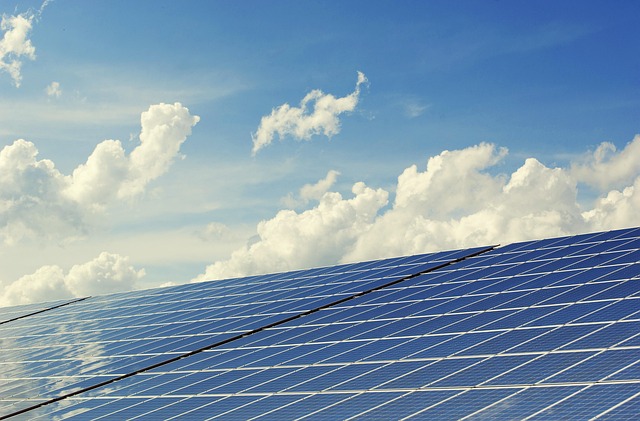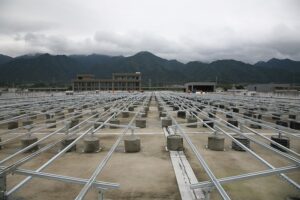
Clean Energy Myths Debunked: What You Really Need to Know
In recent years, the conversation surrounding clean energy has gained significant traction, becoming a prominent topic of discussion among policymakers, environmentalists, and the general public alike. As the world faces the consequences of climate change and seeks sustainable solutions, it’s crucial to differentiate between fact and fiction regarding clean energy. Unfortunately, several myths persist that can cloud public understanding and hinder progress. This article aims to debunk common misconceptions about clean energy and provide a clearer picture of what clean energy entails and its potential impact on our world.
Myth 1: Clean Energy is Too Expensive
One of the most pervasive myths surrounding clean energy is that it is prohibitively expensive. Critics often argue that implementing renewable energy sources requires significant upfront investment, making them impractical for widespread adoption. While it’s true that initial costs can be high, ongoing advancements in technology have consistently driven down the prices of renewable energy sources, such as solar and wind power.
According to recent reports from the International Renewable Energy Agency (IRENA), the costs of solar photovoltaics have fallen by nearly 90% since 2010, while onshore wind costs have decreased by roughly 70%. These price drops are attributed to factors such as improved manufacturing processes, increased competition, and economies of scale. Furthermore, the long-term savings on energy bills and reduced maintenance costs often outweigh the initial investment, making clean energy not only feasible but increasingly affordable.
Myth 2: Renewable Energy is Not Reliable
Another common myth is that renewable energy sources, particularly solar and wind power, are unreliable due to their dependence on weather conditions. Critics argue that the intermittent nature of these energy sources makes them unsuitable for meeting consistent energy demands. However, this perception fails to account for significant advancements in energy storage technology and grid management.
Modern energy systems can now integrate a variety of renewable sources effectively, utilizing battery storage systems to store excess energy generated during peak production times. For instance, when the sun shines brightly or the wind blows strongly, surplus energy can be captured and stored for use during periods of low production. Additionally, smart grid technology allows for real-time energy distribution and better load management, ensuring a consistent supply of energy.
Agility in energy supply and demand has been greatly enhanced through a grid connected by diverse energy sources including hydroelectric power, geothermal energy, and even biomass.
Myth 3: Clean Energy Doesn’t Create Jobs
Contrary to the belief that the transition to clean energy will lead to job losses, the renewable energy sector is, in fact, a significant driver of job creation. The growth of clean energy industries, from solar panel manufacturing to wind turbine installation, has resulted in millions of jobs globally.
The U.S. Bureau of Labor Statistics projected that jobs in the solar and wind sectors would grow exponentially from 2019 to 2029, outpacing job growth in fossil fuel sectors. The sector not only creates new job opportunities but also fosters local economies by increasing investment in infrastructure and technology. Additionally, many of the skills required for jobs in clean energy can be acquired with relatively short training programs, making employment accessible to a broader population.
Myth 4: Solar and Wind Energy are Inefficient
Efficiency is a common concern when discussing renewable energy, particularly for solar panels and wind turbines. Critics often point out that these technologies are less efficient than traditional fossil fuels. However, this belief overlooks the advancements in efficiency that have been achieved over the years.
Modern solar panels can convert over 22% of solar energy into electricity, with ongoing research aimed at further improving these figures. Wind turbines, on the other hand, can achieve capacities of 40% to 50% under optimal conditions. Moreover, it’s essential to consider the overall impact of fossil fuels on the environment and public health. While renewable energy sources may be less efficient than fossil fuels on a per-unit basis, their benefits—such as reduced greenhouse gas emissions and lower air pollution—far outweigh these drawbacks.
Myth 5: Clean Energy is Only for Environmentalists
Many people associate clean energy with environmental activism and grassroots movements, leading to the misconception that it primarily caters to eco-conscious individuals. In reality, clean energy has practical benefits for people across the socio-economic spectrum.
Adopting renewable energy reduces reliance on imported fuels and increases national energy independence, contributing to energy security. It can also lead to lower energy costs for consumers, making clean energy appealing even to those without a strong environmental focus. Furthermore, as fossil fuel prices fluctuate, renewable energy becomes an increasingly attractive alternative. Thus, clean energy solutions can play a vital role in enhancing energy access and promoting economic growth—benefiting everyone, not just environmentalists.
Myth 6: Clean Energy is a Passing Trend
Some skeptics argue that clean energy is merely a passing trend driven by modern environmental considerations and will eventually fade away. However, this perspective overlooks the undeniable shifts occurring in energy production and consumption worldwide. Government policies, international climate agreements, and societal demand for sustainability are reshaping the energy landscape.
Countries around the globe have committed to ambitious targets for reducing greenhouse gas emissions, creating robust frameworks that facilitate the transition to clean energy. The constant influx of investment in renewable projects demonstrates a commitment to building a greener future. Furthermore, as technological advancements continue to optimize and lower the costs of clean energy solutions, the trend toward clean energy adoption will likely accelerate rather than diminish.
Myth 7: Renewable Energy Can’t Meet the Energy Needs of Countries
A prevalent notion is that renewable energy alone will never be able to satisfy the energy demands of entire nations. While it is true that the current energy landscape is heavily reliant on fossil fuels, several countries have made considerable progress in transitioning to renewable energy. For instance, nations like Denmark have successfully generated more than 40% of their energy from wind power alone.
While transitioning entirely to renewable energy on a national level requires careful planning, investment in infrastructure, and innovative policies, it is entirely possible. Integrated energy systems that combine various clean energy sources can effectively meet energy demands while minimizing environmental impact. The key lies in strategically developing a diverse energy portfolio that complements renewable resources with energy efficiency measures and sustainable practices.
Myth 8: Biofuels are Always Clean Energy
Biofuels are often touted as a clean energy alternative, but the reality is more complex. While some biofuels can reduce greenhouse gas emissions compared to fossil fuels, the cultivation of biofuel feedstocks can lead to land use changes that have adverse environmental effects. For example, converting forests or grasslands into agricultural land for biofuel crops can result in biodiversity loss and increased carbon dioxide emissions due to deforestation.
Additionally, the energy input required for cultivating, harvesting, and processing biofuels can negate some of the intended benefits. It’s essential to consider the entire lifecycle of biofuels and choose sustainable options that minimize environmental impact, ensuring that the transition to cleaner energy sources is effective and truly beneficial.
Myth 9: Nuclear Energy is Clean Energy
While nuclear energy does not produce greenhouse gas emissions during operation, it remains a contentious topic within the clean energy debate. Proponents argue that nuclear power can play a vital role in reducing reliance on fossil fuels, yet there are concerns regarding radioactive waste management, potential accidents, and resource use.
Although nuclear energy can be a low-carbon source of electricity, it is essential to weigh the risks and benefits carefully. Many advocate for a diversified energy portfolio that incorporates a range of renewable sources along with nuclear energy, ensuring a more sustainable and resilient energy future without relying excessively on any single source.
Myth 10: Individuals Cannot Make a Difference
Finally, many people feel disempowered regarding the transition to clean energy and believe individual efforts do not significantly impact the broader energy landscape. However, individual actions collectively create a ripple effect that can drive meaningful change.
As more individuals adopt solar panels, electric vehicles, and energy-efficient appliances, demand for clean energy solutions increases. This, in turn, motivates policymakers and industries to invest in renewable projects and technologies. Every decision, no matter how small, contributes to the larger movement toward a sustainable future. Encouraging community involvement, supporting local renewable initiatives, and making conscious energy choices can enhance awareness and inspire others to take action as well.
Conclusion
Dispelling these common myths surrounding clean energy is vital for fostering a more informed, proactive approach to sustainability. As we continue to grapple with the urgent need for climate action and responsible energy consumption, understanding the realities of clean energy becomes imperative.
Buying into misconceptions can hinder progress; thus, it’s essential for all of us—policymakers, businesses, and individuals—to seek the truth about clean energy and actively contribute to building a sustainable future. By recognizing the benefits and challenges of clean energy, we can work collectively to implement solutions that will positively impact the planet, ensuring a cleaner, greener world for generations to come.



